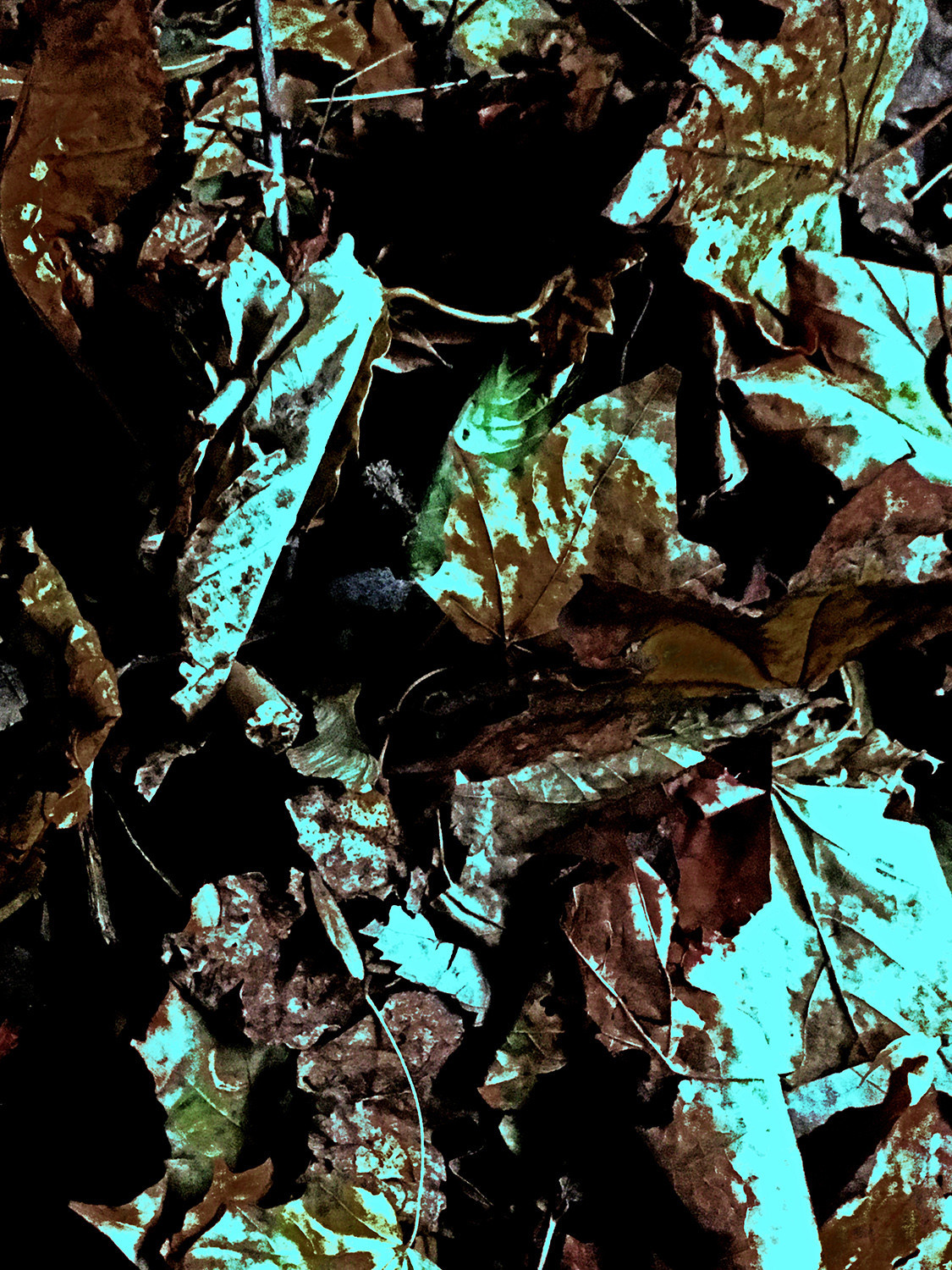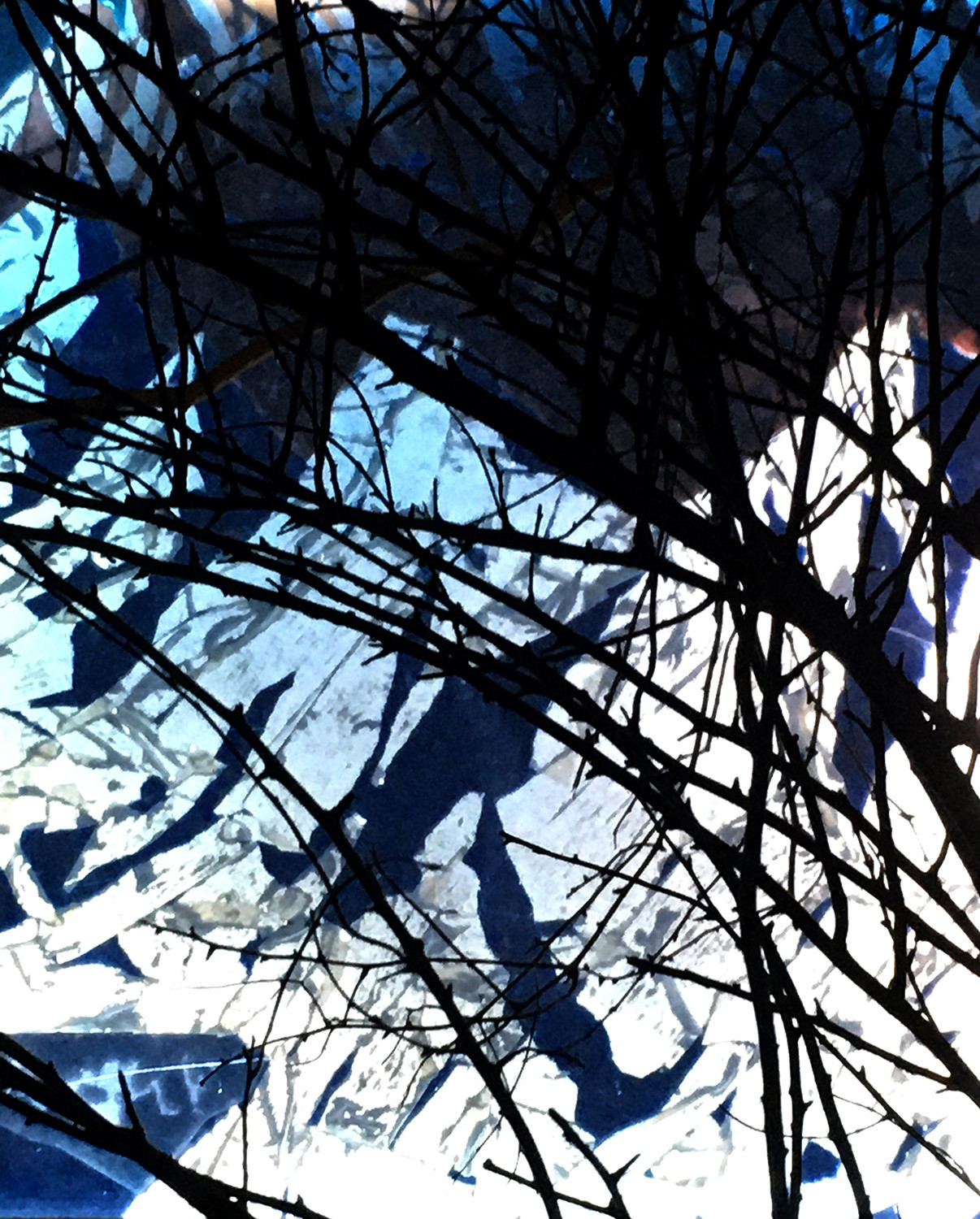
Experiment and a tribute to nature - interview with Péter Mátyási.
Do you know that feeling, when you walk in a forest after dark, observing the lights and noises around yourself, feeling curiosity and fear at the same time? When the sounds of the forest turn into a concert, and you can be a part of it? Visual artist Péter Mátyási and sound designer Áron Donáth evoke this experience in Trafo in the Future Landscapes event series curated by Let it be! art agency. The space-specific installation will take place in Kabin on 18 and 19 October, as part of the AV Composers series. The show is both an experiment and a tribute to nature.
Interview.
Love of nature plays an important role in your works in recent years. Where does it come from?
I grew up in a panel in Kispest, but my parents made their best effort to spend a lot of time in nature. We didn't sit at home much, we often visited the nearby forest and often went down to the KRESZ track. In 1994, we moved to the 11th district, to my grandparents' house with a garden. I left it only when I became an adult, but I inherited the care of the garden from my grandparents and father. In my childhood I adored animal books, I spent a lot of time in the garden, and in the meantime I dreamed of a career as an ornithologist. After high school, I applied to the University of Fine Arts and landscape architecture, but neither of them worked out.
But finally you became an artist. And the topic of nature entered into your art.
I have always been interested in the relationship between man and his surrounding environment. After graduation, I started biking - mostly because of practical reasons - and it gave me a completely new landscape-experience than what I was used to before. At first, the urban environment appeared in my works, then it was followed by the natural environment, which has become an unmissable question of humanity’s life in the last few years. We have to deal more with the questions, how we participate in the life of nature, how we try to fit in, and how we can create symbiosis with it. Several people have chosen to leave the cities for a more natural lifestyle recently. I am one among them: last year I graduated as a golden ear farmer, and we also rented a little land nearby, where we maintain a garden and grow vegetables. So the fact that nature became the focus of my art is not only a conscious choice, but also the result of life events. This is the topic that surrounds me in my everyday life.
In the description of Unbeaten Path, you mention a so-called 'reality-expedition'. Based on what you have told me, this means observing the environment from the bike or during gardening?
Yes. My days and weeks have become very fragmented, I also struggle with the problem of multitasking, like many people. People get caught up in things, but contemplation is missing from many of our lives. In my previous works I already responded to how important it is to get to know the reality that surrounds us, since it is in constant interaction with us. It would be necessary to experience, accept, and let into ourselves our environment. This topic has many layers: you experience the same reality in a completely different way if you make two stops by bike, by tram or on foot. I often experience that we try to bring something from nature into the built, big city life, but we still stay as far away from it as when we watch National Geographic while eating popcorn. We are interested in it, but we do not leave our own universe because of our comfort. In our homes we set the humidity and heat, and we treat ourselves with maximum comfort.
How will it manifest in the case of Unbeaten Path?
A few years ago, I got a request to create an outdoor Nativity scene with my studiomates in front of the Szent Imre church. While we were carving the figures, I found a book titled Wunderwelt der Alpen, which had beautiful pictures of the Alps. The book made me think about what beauty means and what causes admiration in a person. I created a lightbox series, which pieces were built from ordinary waste materials, foils, masking tapes, and a light was hidden in the frames. Lights transformed the materials. In most cases, people felt admiration for it, and the materials became the mediators of this admiration. This raised the interest of curator Andrea Kovács, who invited me to Trafó.
I recently met Áron Donáth sound designer. When the topic came up, he was the first who came to my mind. I thought that some interesting sound effects could add a lot to lights-experimentation. Recently I gained interest in sounds - I even recorded sounds both in the city and in nature, but I knew that Áron could add something more professional to the art.
Walking in a forest after dark is exciting, adventurous and scary at the same time. We plan to design the cabin in a similar way, and hopefully the audience will be happy to explore its treasures. I collected branches and twigs from the garden, which will layed down on the ground, and record their sound and play it back with different effects. Like this, visitors will produce and discover the sound at the same time, and the external environment will communicate with you as a result of your footsteps. If you ask me, everyone will experience this differently. Everyone follows their own path, everyone steps differently, generates a unique sound, and becomes interested in different sounds.
Instead of brushes, you use lights to paint. Don’t you mind that your art does not leave a physical trace?
I don't like to call myself a painter, I've always been happy to experiment with other techniques. Usually those who do the same thing for 10-15 years make a great career, but I don't like to stick to things until boredom. I quitted painting for many years, but I experimented with indigo and airbrush, and I enjoyed them all. I also combined painting with light, which also produced an exciting result. I always do what I enjoy and what the given topic requires the most. I am not looking for a subject based on the way of expression. When I find the topic, that will determine the artistic technique. And it can be just as much a gluing of conifers as a play of lights.
You mentioned that your installation can affect people in many ways. What questions do you think the Unbeaten Path will raise?
Good question. If I were a member of the audience, I would probably feel curious about how the noises resonate, and what they sound. In my opinion, the outcome and the experience depends on our own personality and past experiences. I just want to see the effect. The effect, that people realize that their steps and choices backfire.
This thought can be paralleled with the topic of environmental pollution and climate catastrophe, since cause and effect are huge parts of these topics. Did you want to draw attention to the importance of nature with this piece of art?
I don't want to put an ideological background to this installation but it is undoubtable that the interaction of man and nature has always interested me. I have participated in several environmental protection projects in the past. In addition, the light boxes of the installation were also made of recycled elements. However, my intention was rather an experiment than activism. I am interested in sound as a form of expression. I am interested in what kind of sounds affect us, and how they make an effect. What is the reason behind, that the sound of chirping birds doesn't hit your ears, but if a coin falls 20 meters away, we raise our heads.
You have already participated in many art projects, but you do not really share the creating part with others. Do you enjoy working with Áron?
In connection with my foundation (Eleven Blokk Art Foundation), I am happy to work with others in community and charity tasks, but when it comes to creation, I am a bit of an anti-social person. I do not feel the call to share such tasks with others, nevertheless I really enjoy working together with Áron, and I think it is mutual. I trust him as much as possible, and we work together so casually that I'm not even nervous about the end result. We have a similar habitus, I'm interested in his ideas and insights.


















